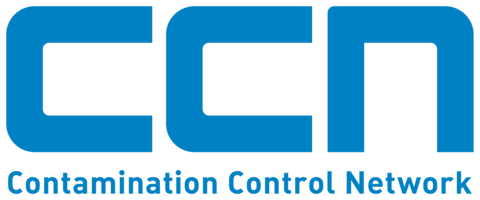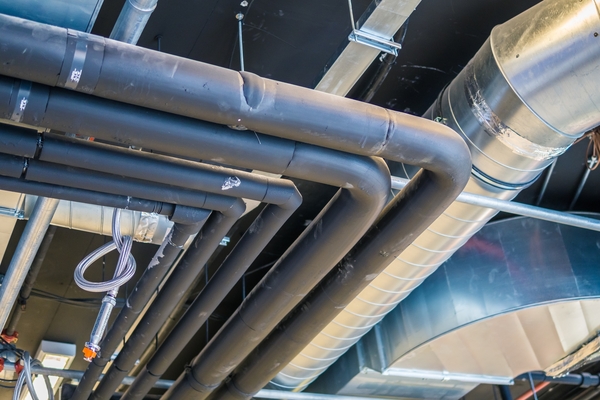Practical advice for reducing the risk of airborne transmission via HVAC systems - Part 2
Risk potential of HVAC airborne transmission
Identification of Risk Potential
Risk potential of HVAC airborne transmission of SARS-CoV-2 cannot be fully defined as the hazard relationship evidence base is not well established yet.
An example approach to the identification of risk potential is defined in the following, based on previous studies on filtration and infectious disease airborne droplet sizes.
We recommend industry and research groups continue to develop the evidence base for detailed hazard and risk assessment of HVAC airborne transmission of SARS-CoV-2.
The following risk table assumes occupants are observing local, national and international guidelines relative to the regional risk levels.
- Self-isolation on observation of symptoms (i.e. not present in the workplace)
- Observing recommended social distancing requirements
- Practising appropriate personal hygiene levels
- Wearing appropriate PPE, including face masks
Other considerations which could affect HVAC airborne transmission which can only be assessed on a system by system basis;
- Airflow pattern/distribution within rooms
- Room layout/occupancy patterns
- Room temperature & humidity profile, including internal & external influences
All these and more are considerations of any HVAC system design to achieve spaces fit for purpose; therefore, re-evaluation of any HVAC system is a useful exercise outside of disease control.
Other Areas (Non-GMP)
Low to Moderate risk non-GMP areas – Common spaces where key critical workers regularly visit that may have limited HVAC systems or lower levels of filtration effectiveness, e.g. below ePM1/ F7 / MERV13
- Control rooms (no remote access possible)
- Locker rooms / changing rooms
- Restrooms / Water Closets
- Canteens / Foodservice
- Office areas – particularly open plan areas, meeting rooms
- Medical Room – consider establishing a separate, isolated area where staff feeling unwell can be quarantined. Risk assess this area as a special case.
Areas should be prioritised considering:
I) number of key staff present/staff density/ability for social distancing
ii) frequency of visits to the area
iii) frequency of interactions with other department staff, e.g. Utilities team and production teams
Risk by system of HVAC airborne transmission of SARS-CoV-2
Systems with a higher risk of airborne transmission include
- Recirculating systems with lower levels of filtration below F7,
- we would not normally expect to see less than F7 (MERV 13) as a final filtration stage in AHUs on pharmaceutical sites.
- Systems that are running at low speed/airflow during occupied hours
- Particularly if filtration is low grade
- Local systems, e.g. Split, or DX AC units, often have very poor local filtration and recirculate within the room.
For higher risk of non-airborne transmission, system characteristics could include
- Systems that already switch off according to time schedule or occupancy
- Due to particle deposition on surfaces
- No HVAC systems, e.g. Enclosed spaces, or areas with poor natural ventilation
Risk Assessment considerations for HVAC changes
The industry guidance has the following major action areas relating to the control of airborne transmission of SARS-CoV-2 in (non-GMP) HVAC systems during an epidemic or outbreak; these key points should be considered fully during any risk assessment. In addition, a list of practical actions is provided in Part 3.
Increased Filtration Levels
Guidance recommends increased filtration levels during epidemic periods, with the general assumption that higher filtration effectiveness will be more effective at removing any potential airborne droplets, lessening risk. There is no benefit to increasing filtration of outside (fresh) air. Risk assessment considerations should include;
- System limitations:
- Air systems may not have physical space to accept higher filtration levels. Practical installation and access should be considered. Additional temporary stages may need to be installed in alternative locations.
- Increased filtration may increase system pressure and may reduce the capacity of the fan to deliver air.
Outside Air quantity (AQ) and recirculation
Guidance recommends increased outside air quantities during epidemic periods, with the general assumption that more outside air will dilute any potential airborne droplets, lessening risk. Reducing or eliminating recirculation has also been cited as risk reduction action; however, this should be considered in the context of the specific systems under consideration. Risk assessment considerations should include:
Type of HVAC system
- Local systems, e.g. Split or DX AC units. Outside air may come from a central air handling unit with fixed capacity or only from a local fan or window.
- Central systems – Increasing outside air quantity may not be reasonably practicable in the short term due to duct or inlet sizes, heating or cooling coil capacities.
Temperature & humidity
- Increased quantity of outside air will, in most cases, increase heating & cooling demand, potentially beyond design conditions which could lead to rooms/spaces that are outside of comfortable or desired conditions.
- Increased heating & cooling loads will place more demand on utility equipment, which may need assessment for capacity and/or redundancy availability
Any proposed changes to filtration should plan to revert to agreed design operating levels in the post-epidemic situation.
Airflow rates (Air change rates)
Guidance recommends increased airflow during epidemic periods with the general assumption that more airflow will increase both outside air and frequency of air passing through filtration, lessening risk. Risk assessment considerations should include:
- System limitations. The HVAC system may have limited additional capacity (fans, ductwork, diffusers)
- Occupant comfort – increasing airflow may have unintended draughts or noise issue
- 100% Outside air systems – If the system can operate with 100% OA, increasing airflow rates beyond normal design conditions may have little further benefit in risk reduction. For reference, UK hospital isolation rooms for containing highly infectious patients are designed for 10 air changes with 100% OA.
- Optimal airflow rates – If outside air quantities and filtration level has been increased as far as practicably possible, increasing airflow rates beyond normal design levels may have little further benefit in risk reduction.
Any proposed changes to airflow rates should plan to revert to agreed design operating levels in the post-epidemic situation.
Out of hours airflow
Guidance recommends increased building air flushing pre- and post-occupancy, with the general assumption that more airflow in these times will decrease bio-burden, lessening risk. Risk assessment considerations should include:
- Length of unoccupied building flushing required – ASHRAE recommends 2 hours pre- and post-occupancy or the equivalent of 3 outdoor air changes. For example, if a system has 35% outside air, an overall air change rate of 9 ACH would achieve recommended building flush in approximately one hour before HVAC can be switched off.
- -If out of hours airflow setbacks are in place already (i.e. reduced airflow, but not switched off), review time schedules with respect to occupancy to ensure they are appropriate;
- removing setbacks completely (i.e. 24/7) may have limited or no further benefit in risk reduction, particularly if filtration levels are F7 or above
Any proposed changes to airflow rates or controls should plan to revert to agreed design operating levels in the post-epidemic situation.
Look out for Part 3 of this article which will be published next week.
Become a "No Fee" member of the CCN today.




